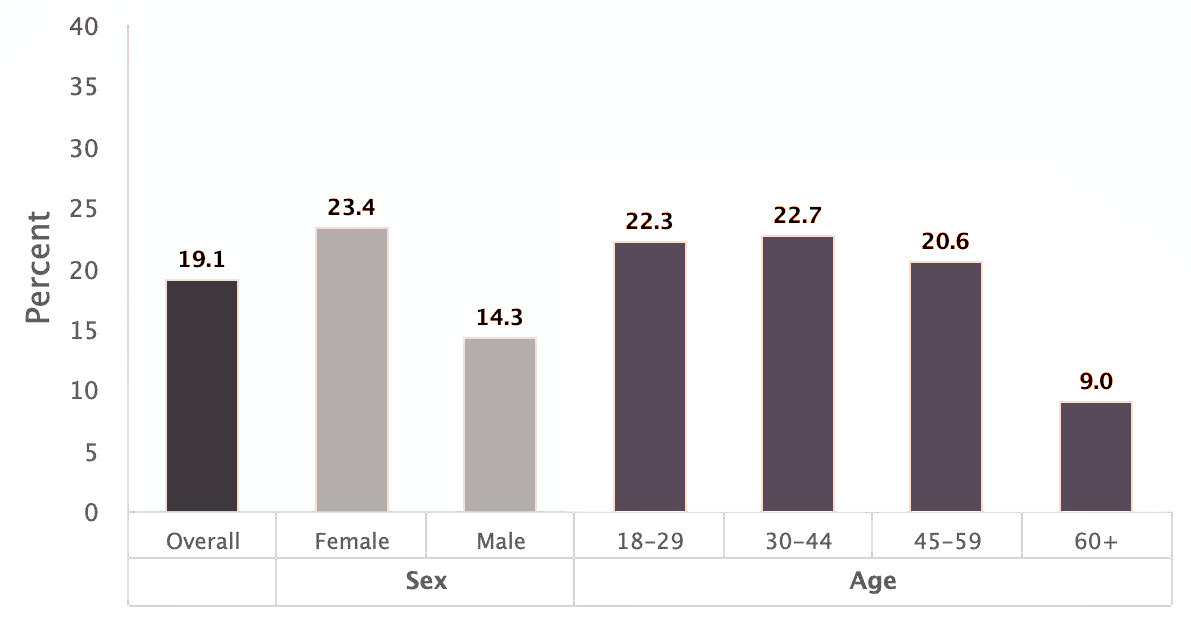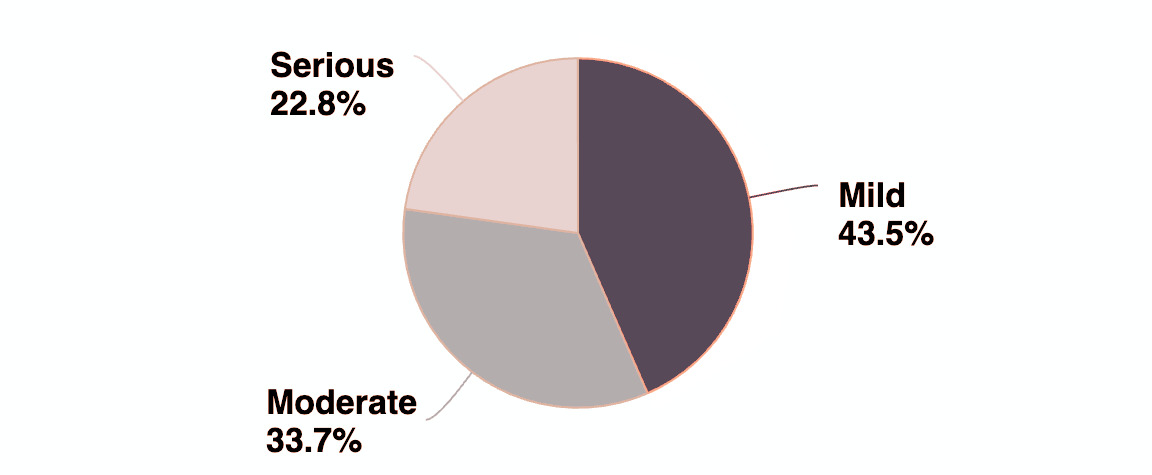Anxiety

Understanding Anxiety Disorders
Anxiety disorders are the most common mental health conditions, affecting millions worldwide. These disorders result in excessive fear, worry, or nervousness that interferes with daily life. Anxiety manifests in various forms, each with distinct symptoms and triggers. Below are descriptions of several anxiety disorders, their symptoms, and an overview of how they affect quality of life.
Generalized Anxiety Disorder (GAD)
Generalized Anxiety Disorder is characterized by persistent and excessive worry about a variety of topics, such as health, finances, work, or personal relationships. People with GAD often find it hard to control their worry, and it can occur most days for at least six months. Symptoms include racing thoughts, excessive worry, feeling overwhelmed, restlessness, fatigue, difficulty concentrating, irritability, muscle tension, and sleep disturbances. This condition often affects the ability to perform day-to-day tasks and can diminish overall quality of life.
Social Anxiety Disorder (Social Phobia)
Social Anxiety Disorder involves an intense fear of social situations where one may be judged negatively, worry about embarrassing oneself, intense fear of interacting with strangers, avoidance of social situations, as well as physical symptoms like blushing, sweating, trembling, and difficulty speaking, among others. This fear leads to avoidance of social interactions, which may limit educational, occupational, and personal opportunities. People with social anxiety often have trouble finding and building relationships, as their fear can prevent them from interacting with others.
Panic Disorder
Panic Disorder is marked by recurring panic attacks—sudden periods of intense fear or discomfort that peak within minutes. Symptoms include chest pain, heart palpitations, shortness of breath, dizziness, and a fear of losing control or dying. Panic attacks often occur unexpectedly, creating anxiety about when the next one will happen, which can lead to avoidance behaviors, such as agoraphobia. Panic Disorder differs from Generalized Anxiety Disorder in that it involves episodic panic attacks rather than ongoing worry.
Differentiating Panic and Anxiety Attacks
While panic attacks are characterized by sudden, intense physical symptoms such as chest pain and palpitations, anxiety attacks tend to be less severe but prolonged and are often triggered by excessive worry. Anxiety attacks typically build over time, while panic attacks occur abruptly, often without a clear cause.
Obsessive-Compulsive Disorder (OCD)
OCD is characterized by the presence of obsessions (persistent, unwanted thoughts) and compulsions (repetitive behaviors or mental acts aimed at reducing anxiety). For example, someone with OCD might have an obsession with germs and feel compelled to wash their hands excessively. These behaviors are often time-consuming and cause significant distress. OCD can severely disrupt daily routines and relationships, as the compulsions often take precedence over other activities.
Specific Phobias
A specific phobia is an intense, irrational fear of a particular object or situation, such as flying, heights, or spiders. Even though the feared object poses little or no actual danger, individuals with phobias go to great lengths to avoid it. When confronted with the phobia, they may experience extreme anxiety, panic, or distress. These phobias often lead to avoidance behaviors that can disrupt life, especially if the fear involves common activities.
Other Common Forms of Anxiety
- Separation Anxiety Disorder: Often seen in children, but also affecting adults, this disorder involves excessive fear or anxiety about being separated from loved ones.
- Agoraphobia: The fear of being in situations where escape might be difficult, such as crowded spaces or open areas, which may lead individuals to avoid public spaces altogether.
- Anxiety Disorder Unspecified: Refers to anxiety symptoms that don’t fully meet the criteria for a specific anxiety disorder but still cause distress or impairment.
- Adjustment Disorder with Anxious Features: Occurs when stress from a life change triggers significant anxiety, but symptoms are short-term and linked to that specific event.
- Acute Stress Disorder: Develops after a traumatic event, leading to anxiety symptoms that last for a brief period, typically less than a month.
- Substance-Induced Anxiety Disorder: Anxiety symptoms caused by drug use, withdrawal, or exposure to toxic substances.
Etiology of Anxiety Disorders
The etiology of anxiety disorders is multifaceted, involving a combination of genetic, environmental, psychological, and neurobiological factors. Genetics plays a significant role, as individuals with a family history of anxiety disorders are more likely to develop them. Environmental influences, such as exposure to trauma, chronic stress, or adverse childhood experiences, can trigger or exacerbate anxiety. Neurobiological factors may include imbalances in neurotransmitters like serotonin and norepinephrine. Cognitive factors, such as distorted thinking patterns, also contribute, creating a complex interaction that varies by individual. Understanding these factors is crucial for effective treatment.
Statistics and Prevalence
According to the National Institute of Mental Health (NIMH), anxiety disorders affect approximately 18.1% of adults in the U.S. every year. Women are more likely to experience anxiety disorders than men, and the prevalence is highest in individuals aged 18 to 44. Globally, anxiety disorders affect around 264 million people.
Prevalence of Any Anxiety Disorder Among U.S. Adults:

Severity of Any Anxiety Disorder Among U.S. Adults:
 Reference: The charts are from the National Institute of Mental Health (NIMH).
Reference: The charts are from the National Institute of Mental Health (NIMH).
City Life and Mental Health: Anxiety in New York
Studies show that living in major cities like New York City is associated with a higher prevalence of anxiety and depression compared to smaller cities or rural areas. According to the World Economic Forum, city living increases the risk of generalized anxiety disorder by 21%. Furthermore, the high population density, elevated cost of living, and sensory overload typical of urban environments like NYC exacerbate anxiety symptoms. Social stress, driven by both overcrowding and isolation, has been identified as a significant contributor to these mental health challenges.
Impact on Quality of Life and Relationships
Anxiety disorders can severely affect the quality of life, often leading to avoidance of important activities, social withdrawal, and difficulty maintaining relationships. Chronic anxiety may result in reduced work productivity, financial strain, and poor physical health. Relationships often suffer as individuals with anxiety may isolate themselves or struggle to communicate their needs effectively. Loved ones may also feel burdened by the constant need to provide reassurance or support.
The Importance of Treatment
Treatment for anxiety disorders is crucial for improving quality of life. Untreated anxiety can lead to other serious mental health issues such as depression or substance abuse. Effective treatment can help individuals address and manage symptoms, reduce avoidance behaviors, and improve relationships.
Treatment Options
- Psychotherapy: One of the most effective treatments for anxiety disorders is psychotherapy. It can help individuals identify and challenge negative thought patterns, explore the underlying emotional conflicts contributing to their anxiety, go beyond anxiety symptoms by understanding the fears that drive them (e.g., rejection anxiety, fear of losing control), and develop healthier coping mechanisms.
- Exposure Therapy and Systematic Desensitization: Often used for phobias and OCD, these therapies gradually expose individuals to their fears in a controlled manner, helping them reduce their anxiety response over time, sometimes using biofeedback devices.
- Medication: Antidepressants, anti-anxiety medications, and beta-blockers are commonly prescribed to reduce symptoms of anxiety disorders. Medication is often used in conjunction with therapy to provide comprehensive treatment.
- Lifestyle Changes: Practicing relaxation techniques, such as mindfulness or meditation can help reduce anxiety symptoms. Understanding and addressing life stressors that exacerbate anxiety can bring profound relief.
- Support Groups/Group Therapy: Joining a support group for anxiety disorders allows individuals to share their experiences and learn from others facing similar challenges. This can foster a sense of community and reduce feelings of isolation.
How I Can Help
Dealing with anxiety can feel overwhelming, whether it manifests as constant worry, social anxiety, panic attacks, or racing minds. Each experience of anxiety is unique, and understanding its root causes requires a personalized approach. I provide tailored support to help you manage and overcome anxiety by exploring the underlying issues and developing practical coping strategies. My goal is to create a safe, non-judgmental space where you can openly discuss your concerns and work towards reducing anxiety's impact on your daily life.
Through a combination of evidence-based practices and empathetic guidance, we will work together to address your specific needs. Whether you’re facing generalized anxiety, social fears, or obsessive thoughts, my approach focuses on helping you regain control, build resilience, and achieve a greater sense of peace and well-being.
Trying to define yourself is like trying to bite your own teeth.
- Alan Watts, Secular Buddhism
Reach Out